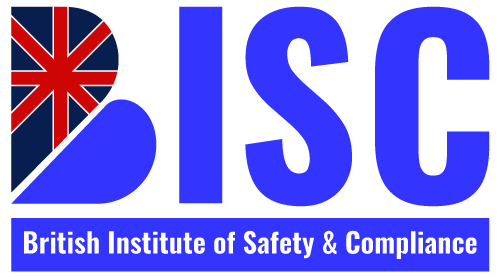Work at Height: 7 Mistakes That Can Cost Lives (And How to Avoid Them)
📌 Introduction
Working at height remains one of the most dangerous activities in the workplace. According to HSE UK statistics, falls from height are the leading cause of workplace fatalities. Whether it’s scaffolding, ladders, roofs, or platforms — poor safety practices can result in life-changing injuries or even death.
In this guide, BISC (British Institute of Safety & Compliance – UK) breaks down the 7 most common work-at-height mistakes, why they’re dangerous, and how to avoid them using globally accepted safety practices.
❌ Mistake 1: Not Wearing Fall Protection Equipment
Why It’s Deadly:
Failing to use fall arrest systems (like harnesses and lanyards) puts workers at extreme risk. One slip, one misstep, and it’s a long fall to a serious injury — or worse.
How to Avoid It:
Always wear properly fitted PPE certified for fall protection. Inspect all equipment before use. BISC-certified courses teach you how to select and maintain your gear based on the job type and height.
❌ Mistake 2: Using Damaged or Uninspected Equipment
Why It’s Deadly:
Harnesses, anchors, or scaffold parts with hidden wear and tear can fail mid-task. Many incidents happen not due to lack of equipment — but because it wasn’t inspected.
How to Avoid It:
Perform a pre-use inspection every time. If you see frays, rust, or bent parts — replace it. Our Working at Height Safety Training teaches daily inspection checklists and safety tagging systems.
❌ Mistake 3: No Risk Assessment or Method Statement (RAMS)
Why It’s Deadly:
Without assessing hazards and planning work, you risk being caught off guard by weather, surface instability, electrical hazards, or even nearby machinery.
How to Avoid It:
Follow HSE UK regulations by conducting a proper risk assessment and work method statement before any elevated work begins.
❌ Mistake 4: Inadequate Supervision
Why It’s Deadly:
Poorly supervised teams often skip steps, misuse gear, or ignore safety controls — leading to tragic consequences.
How to Avoid It:
Ensure that all height work is supervised by a trained site safety officer or competent person, such as someone who completed BISC’s HSE Supervisor & Risk Management Training.
❌ Mistake 5: Misusing Ladders or Scaffolds
Why It’s Deadly:
Using a ladder as a work platform, climbing with tools in hand, or building unsafe scaffold towers are all common, dangerous mistakes.
How to Avoid It:
Use the right access equipment for the task. BISC’s Scaffold Erection & Inspector courses teach legal and safe scaffold setup as per BSI standards.
❌ Mistake 6: Poor Weather Awareness
Why It’s Deadly:
Working at height during high winds or rain greatly increases the risk of slips, falls, and structural failure.
How to Avoid It:
Monitor weather conditions, especially for outdoor work. Halt operations if the environment becomes unstable — it’s part of your emergency planning protocol.
❌ Mistake 7: Lack of Emergency Rescue Planning
Why It’s Deadly:
Even with all precautions, accidents can happen. Without a rescue plan, workers may remain suspended too long, risking suspension trauma or delayed medical aid.
How to Avoid It:
Every elevated work site should have a rescue plan in place — not just in theory, but practiced and ready. BISC training includes rescue awareness and coordination with emergency teams.
🎓 Get Trained. Stay Safe.
Avoiding these mistakes requires awareness, planning, and certified training. That’s why BISC offers instructor-led courses aligned with HSE UK and BSI standards.
🔹 Featured Course:
✅ Working at Height Safety Training – Certified by BISC UK
Live instructor-led (online or onsite)
PPE use, fall arrest systems, scaffold & ladder safety
Risk assessment, legal compliance, and rescue planning
Certification recognised in UK, UAE, KSA, and offshore sites
Digital certificate with QR-based verification
